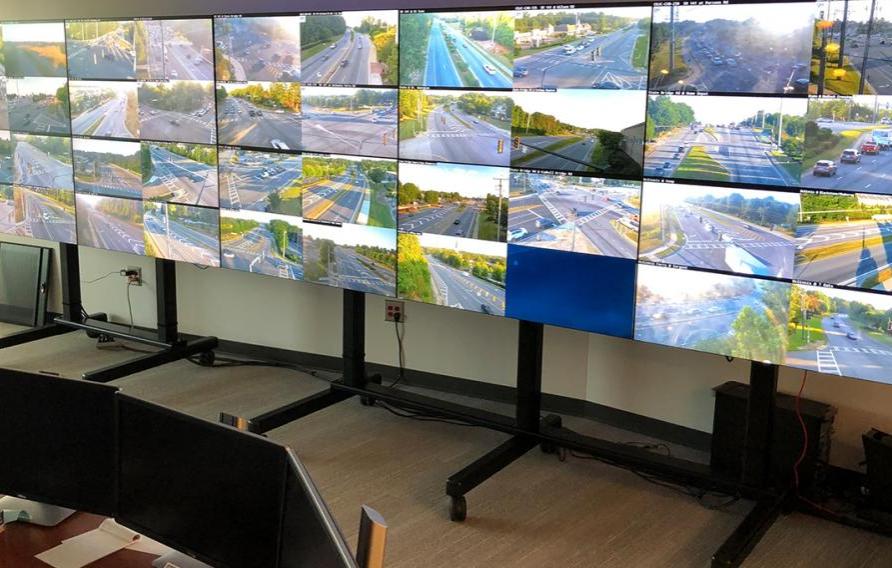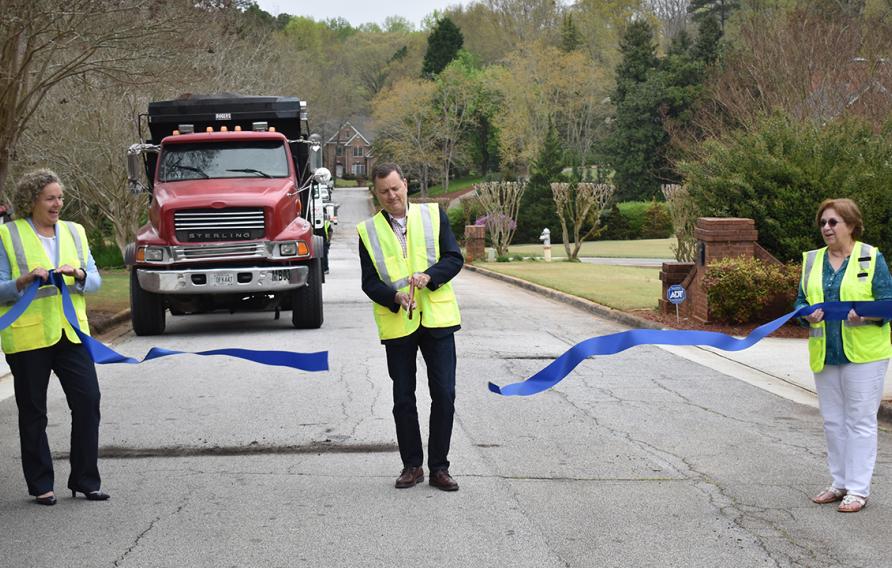Residents in Georgia’s 9th largest city, Johns Creek, consistently rank traffic congestion as one of the top concerns in the city. To help enhance the traffic signal network, the City of Johns Creek made strategic investments in future-focused technologies for the traffic signal system, including the installation of a connected vehicle (CV) technologies program. As the Johns Creek Public Works Department, Jacobs is managing the deployment of the program to improve transportation safety, mobility and efficiency.
Implementing a strategic partnership
The city boasts one of the most advanced Traffic Control Centers in Georgia. And as the operator of the Traffic Control Center, we constantly research ways current and new technology can improve traffic safety. As technology has proven effective in improving the function of signalized intersections by communicating alerts on signal timing, accidents, work and construction zones, and congestion, we recommended a Connected Vehicle Deployment Program to the city.
The program is a collaboration between the city, the Georgia Department of Transportation (GDOT) and the Atlanta Regional Commission, and builds on the city’s existing traffic signal system by adding CV infrastructure. The city maintains control of signals from the Traffic Control Center, and we’re working with GDOT to facilitate all facets of deployment, including project management, device procurement, device testing, licensing, testing, as well as validation and application development.
“The collaboration and our oversight serve as an administrative liaison for investigating, piloting and implementing the CV infrastructure on behalf of the city,” says Jacobs Traffic Manager Kim Williams.
But why connected vehicles?
Connected vehicle technology is a combination of hardware and software that work in tandem to communicate with a CV through its entertainment system. Communication is done via an onboard unit and a roadside unit (RSU) by submitting basic safety messages. Although the majority of vehicles on the road today are not connected vehicles, many are now being built with the capability.
“Connected vehicles will allow drivers to navigate to their destination while avoiding hazards and responding to traffic conditions,” says Kim. “This program furthers Johns Creeks’ shift to proactive traffic signal management and is a step toward infrastructure for a more optimized traffic signal network.”
Connected vehicle technology as a data solution
We manage 80 traffic signals throughout the city. GDOT contracted with Atkins to install Dedicated Short Range Communication (DSRC) and Cellular Vehicle-to-Everything (CV2X) RSUs at each intersection, with 160 units deployed in total. The traffic signal cabinets contain the traffic signal equipment and serve as the computers in the field that communicate back to the Traffic Control Center.
The data gathered from the RSU hardware translates information about signal timing, pedestrian crossings, traffic congestion, reduced speed sections and more. This data allows our traffic engineers to understand information such as driver behavior and the state of traffic, especially congestion and the impacts to travel patterns.
Additional software is being developed to ultimately translate the data so it is digestible to our drivers and provides a reliable and comprehensible user interface.
A safer roadway for residents and first responders in the future
With a keen focus on safety for our residents, the program focuses on using this technology for our emergency vehicles, specifically fire. While fire trucks have sirens, it doesn’t provide them added security of a green light so they can safely cross intersections during an emergency call.
In the next few months, we’ll work with the Johns Creek Fire Chief to install the radios in all firefighting apparatuses so we can further implement and test the technology. We expect to see an improvement in roadway safety and improved efficiency.
“We’ll continue to explore opportunities for the technology and its capabilities. This program will provide increased confidence in our use of CV technology, and that confidence will ultimately enable better decisions in our traffic management and ensure the safety of our residents,” adds Kim.
You might be interested in...
-

 News
NewsHow This Growing Georgia City Tackled its Traffic in Real-Time
As the population continues to grow, rising traffic congestion is an unavoidable issue in large and small metropolitans alike. What if we showed you how Jacobs and the City of Johns Creek are improving the efficient and safe flow of goods, services and people by monitoring traffic flows and responding in real time?
-
 News
NewsJacobs Keeps Up the Rhythm of Public Works in Cities Nationwide
To celebrate National Public Works Week, we’re sharing what some of our teams nationwide have been up to, all while taking precautions and practicing social distancing!
-
 News
NewsNational Public Works Week: Jacobs Helps Cricket Become a Smash in Johns Creek
As we celebrate National Public Works Week, May 17 to 22, we’re highlighting how Jacobs is playing a key role in the rhythm of a community.



















































